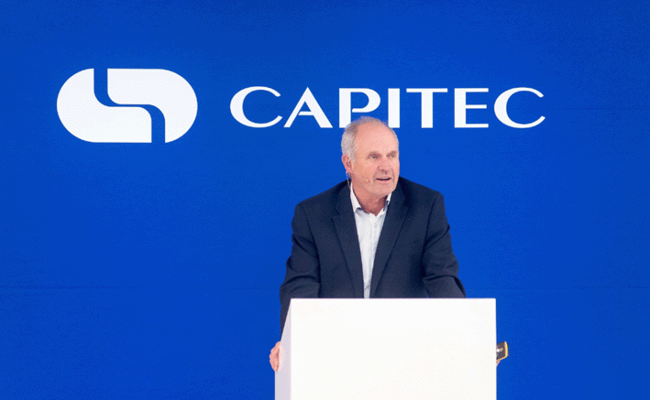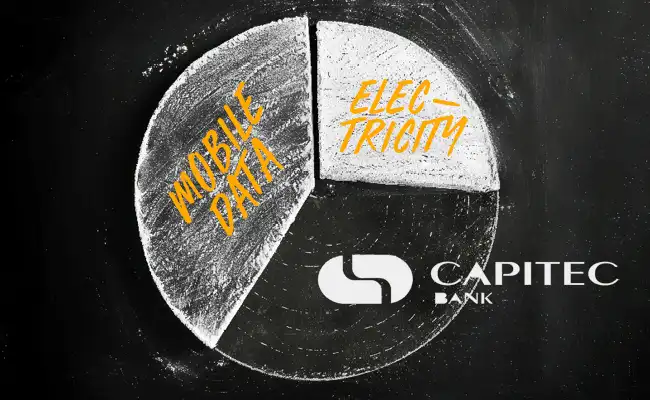A quarter of a century ago, Henk Lourens was in charge of acquisitions at the PSG arm that would later grow into Capitec. His task was simple: buy cash-loan shops (yes, microlenders), and enough of them to create a nationwide chain that could be transformed into a fully-fledged bank.
Armed with capital from the financial services group, Lourens and his team descended on small towns and bought a distribution network bit by bit in some of the strangest places. One of the microlenders, for example, used a former butchery as a branch. The butcher’s block was still there, giving new meaning to a credit provider claiming its pound of flesh.
Spoiler alert: the strategy worked. After pulling together those first 300 shops, Capitec began opening its own branches, moving and closing and reopening spaces anywhere from Bellville to Melville until two decades later it got to the near 900 shopfronts it now has.
Today, Lourens heads up “strategic initiatives” at Capitec. Where his earlier job was to create a distribution network, these days it is to get the most out of that footprint. Part of that is “value-added services” (VAS) – selling anything from airtime to prepaid electricity to lottery tickets. An online shop of sorts, but with millions of customers it can reach instantly. Capitec’s latest set of results shows that VAS, along with mobile business Capitec Connect, has grown to a R2bn revenue stream for the six months until the end of August. A nifty contributor if you consider that headline earnings for the period came to about R6.4bn (up 36%).
“We started taking it seriously three years ago,” CEO Gerrie Fourie tells Currency. There was a clear shift in the payment of utilities – with so many municipalities struggling to rake in arrears, most of them moved to prepaid billing. But walking to a shop or a kiosk is no longer necessary when you want to buy kilowatts or kilolitres or kilobytes – it can all be done on a phone screen. And with 23.2-million clients – some 12.4-million of them on the bank’s app – Capitec sells more than a quarter of all electricity in the country and nearly a third of all data.

A diverse offering
Fourie believes in thoroughly exploring opportunities, giving lucrative pursuits the full attention of top management. Which is why a stalwart such as Lourens has VAS under his purview.
It all forms part of a strategy to transform Capitec from a narrowly focused retail banking operation into a broader financial services group with interests in business banking, insurance and dipping a toe ever deeper into international markets.
Fourie, who has held the reins since 2014, began the shake-up in 2019 with the acquisition of Mercantile Bank, which has since been rejigged and rebranded Capitec Business Bank. In the latest half-year, the division contributed a modest R214m to headline earnings, but there is plenty of room for growth as the other banks rake in between R2bn and R4bn from business banking every six months, says Fourie.
Capitecifying (my word, not theirs) an existing financial institution such as Mercantile proved a longer process than the bank might have hoped for – an endeavour not helped by the Covid pandemic and the recessionary conditions caused by South Africa’s electricity funk of the past few years.
But Capitec is clearly taking the fight to the established giants – last year cutting fees to the same level as for retail clients – continuing the aggressive pricing strategy that has for years been a hallmark of the bank.
Low prices make sense when you have high volumes. Whereas those microlending roots meant that 20 years ago Capitec’s results were all about interest income, these days it is mostly the volume of transactions that matter.
The 23-million-odd clients earned Capitec nearly R6.5bn in net transaction income, some 10% more than a year ago. Even though net lending income (after impairments) has also grown by more than 10%, at R5bn it is clearly now the junior partner when it comes to revenue streams in personal banking.
‘No potatoes in a banking hall’
But a relatively new source of income, also part of Fourie’s transformation of the group since 2019, is insurance. It now contributes R1.5bn to headline earnings.
Fourie’s predecessor Riaan Stassen for years stood firm against shareholder pressure (often from PSG-founder Jannie Mouton) to sell insurance through the Capitec branch network. His mantra: we are not going to sell potatoes in a banking hall! And so the bank’s “staple” remained unsecured loans and transaction fees.
But Capitec has changed. One in every two adults now has an account at the bank. That’s no small potatoes. Plenty of products can be flogged through the app without much hassle.
So Fourie started the push into insurance, first with credit life insurance and funeral policies, but more recently with full life cover. And where it was initially in collaboration with the likes of Guardrisk and Sanlam, Capitec last year obtained its own insurance licence and is gradually weaning itself off those partners.
It fits with Fourie’s strategy of wanting to “own the interaction with the client”. The more interaction, the more data points and the better the bank can tailor its offering. Sure, it sounds creepy, but “big data” has changed the way the world does business. The mobile business Capitec Connect is a useful resource to mine, with some 1.2-million clients now on the system. And Fourie’s bank now has about 2.5-trillion data points it can analyse with the help of AI and do machine learning on and whatever else the tech-buzzword of our day is.
If it does this well, the stellar growth of the past few years might very well continue. “There are still so many opportunities,” says Fourie.
‘Nosebleed’ levels
Analysts canvassed by Currency were hard-pressed to disagree. If anything, the only real red flag for both Umthombo Wealth’s Nomtha Ngumbela and Rozendal Partners’ Wilhelm Hertzog is the price of Capitec’s shares – which topped R3,170 on Wednesday.
“You either buy into the story or you don’t,” says Ngumbela. “The amber flag, if you like, is around the valuation.” An astounding run in its share price over the past year – the stock is up 80% – means Capitec’s p:e of 25.5, based on this week’s results, is more than double that of FirstRand, for example.
“It’s frothy,” says Ngumbela. “They misstep even a little and they don’t hit those growth targets on the VAS and investors could quickly punish them for not producing the growth that is expected.”
Of course, if you’d bought Capitec and just held on, you’d be smiling. But Hertzog says the bank’s price-to-book ratio is now at eight times – “nosebleed” levels – compared to the two times that other well-run banks tend to trade at.
Still, Capitec has consistently managed to grow into its multiples and Hertzog says there aren’t too many major issues that could trip it up.
“VAS and those transactional income streams are very capital light and produce high returns, so they are fantastically appealing,” he says.
The one threat could be in the form of competition from retailers like Shoprite or Pepkor marshalling their forces into fintech, as well as TymeBank, which Hertzog describes as a potential challenger to Capitec, much like Capitec was to the Big Four 20 years ago.
However, he points out, banking services are “sticky” – particularly if your app is user friendly.
Pressed for more negatives in the results, Ngumbela says that Capitec’s operating costs were up steeply (30%) and slightly ahead of market expectations, as were its IT bills – up 36%.
But, she says, “those will remain higher in the long term in line with its growth path on VAS which makes sense, but is worth keeping an eye on”.
* TJ Strydom is the author of ‘Capitec – Stalking Giants’
Top image: Collage. Currency.









